
What is a water system?
The water system, that is, the air conditioner uses water as the refrigerant. The water system is larger than the traditional fluorine system. It is generally used in large buildings. At the same time, the opening rate is over 90% to save energy. American brands account for the main market share, mainly in the commercial market. The water system assumes all the indoor loads by the cold and hot water units, and the fan coil units in each room are connected to the cold and hot water units through pipes, and the cold and hot water provided is used for cooling and heating. A typical air-conditioning unit is mainly composed of three parts: chilled water circulation system, cooling water circulation system, and host:
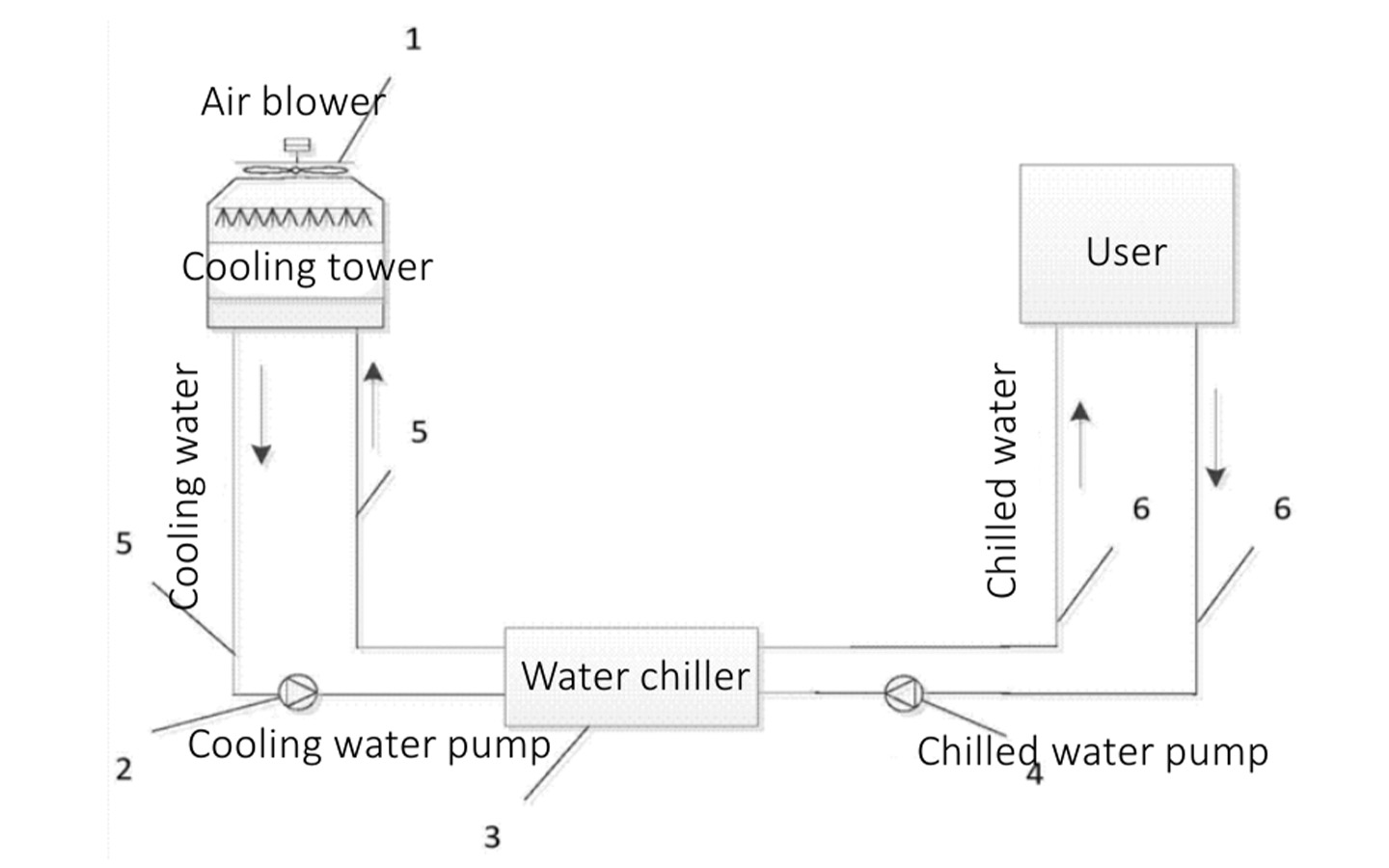
1.Chilled water circulation system
The chilled water circulation system consists of a chilled water pump, indoor fan, and chilled water pipes, among others. The low-temperature chilled water from the evaporator of the main unit is pressurized by the chilled water pump and sent into the chilled water pipes (supply), where it undergoes heat exchange with the indoor air, absorbing heat from the rooms. It then returns to the evaporator of the main unit (return). The indoor fan blows air over the chilled water pipes, reducing the air temperature and facilitating indoor heat exchange.
2.Cooling water circulation part
The cooling water circulation system consists of a cooling water pump, cooling water pipes, and cooling towers, among others. While the chilled water circulation system conducts indoor heat exchange, it also carries away a significant amount of heat energy from the indoor environment. This heat energy is transferred to the cooling water within the main unit, causing an increase in the temperature of the cooling water. The cooling water pump pushes the heated cooling water into the cooling towers (supply), where it undergoes heat exchange with the atmosphere, lowering its temperature. The cooled water is then returned to the condenser of the main unit (return).
3.Host machine
The main unit consists of a compressor, evaporator, condenser, and refrigerant (cooling agent).
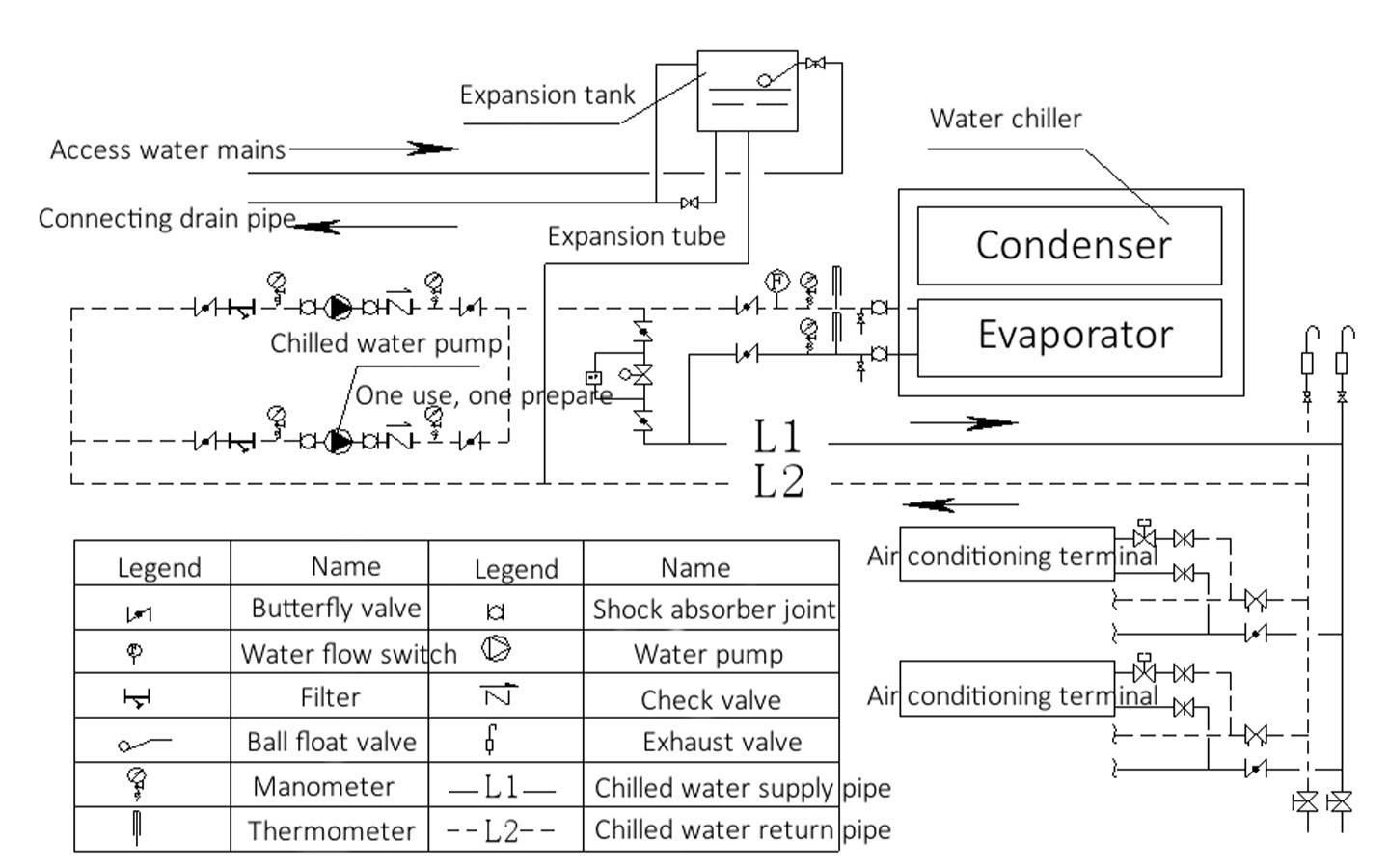
Composition of water system
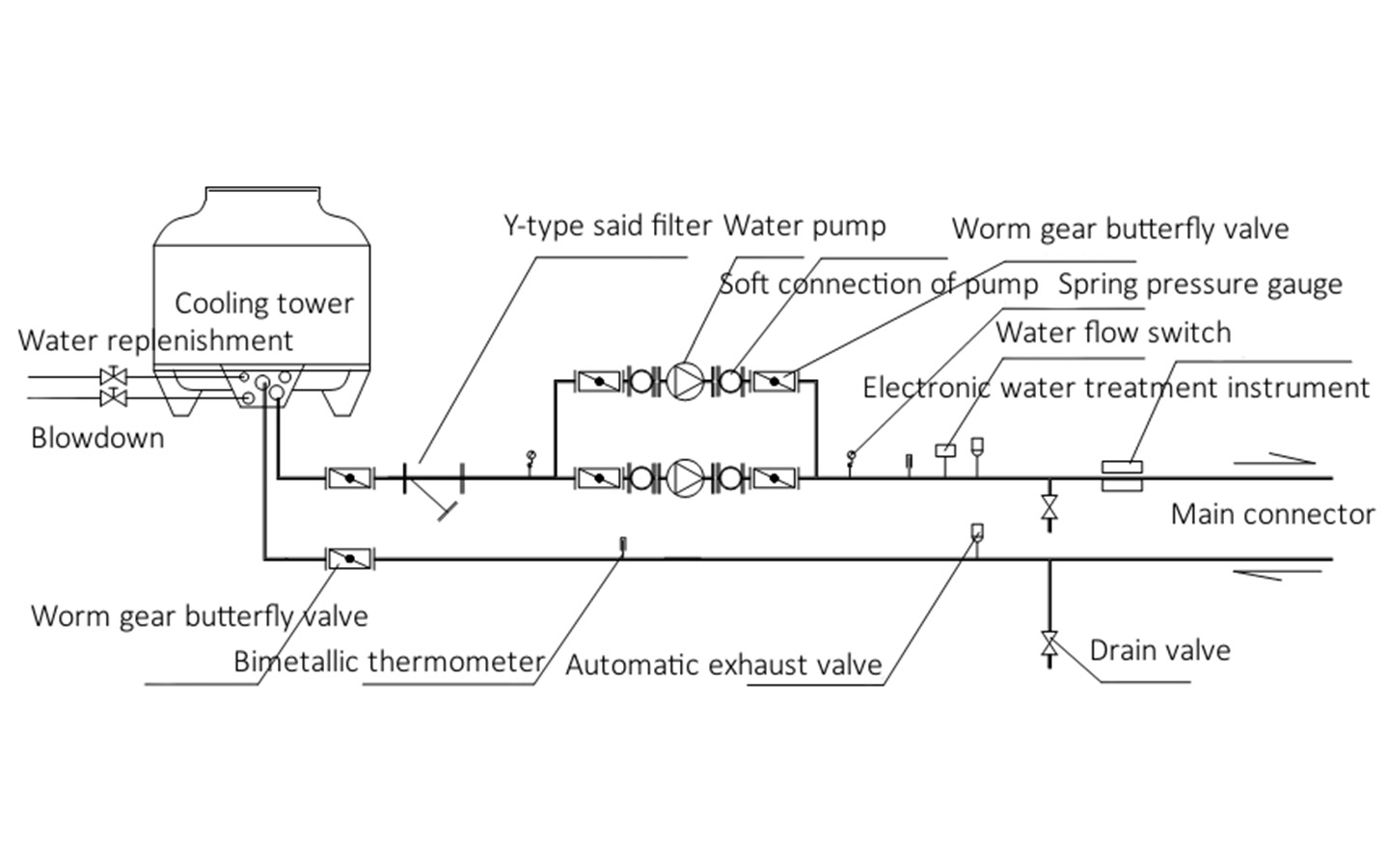
Bleed Valve: It automatically removes air concentrated in or at specific locations within the water circulation. It is an essential valve in air conditioning systems. Typically installed at the highest point and local high points of closed-loop water systems.
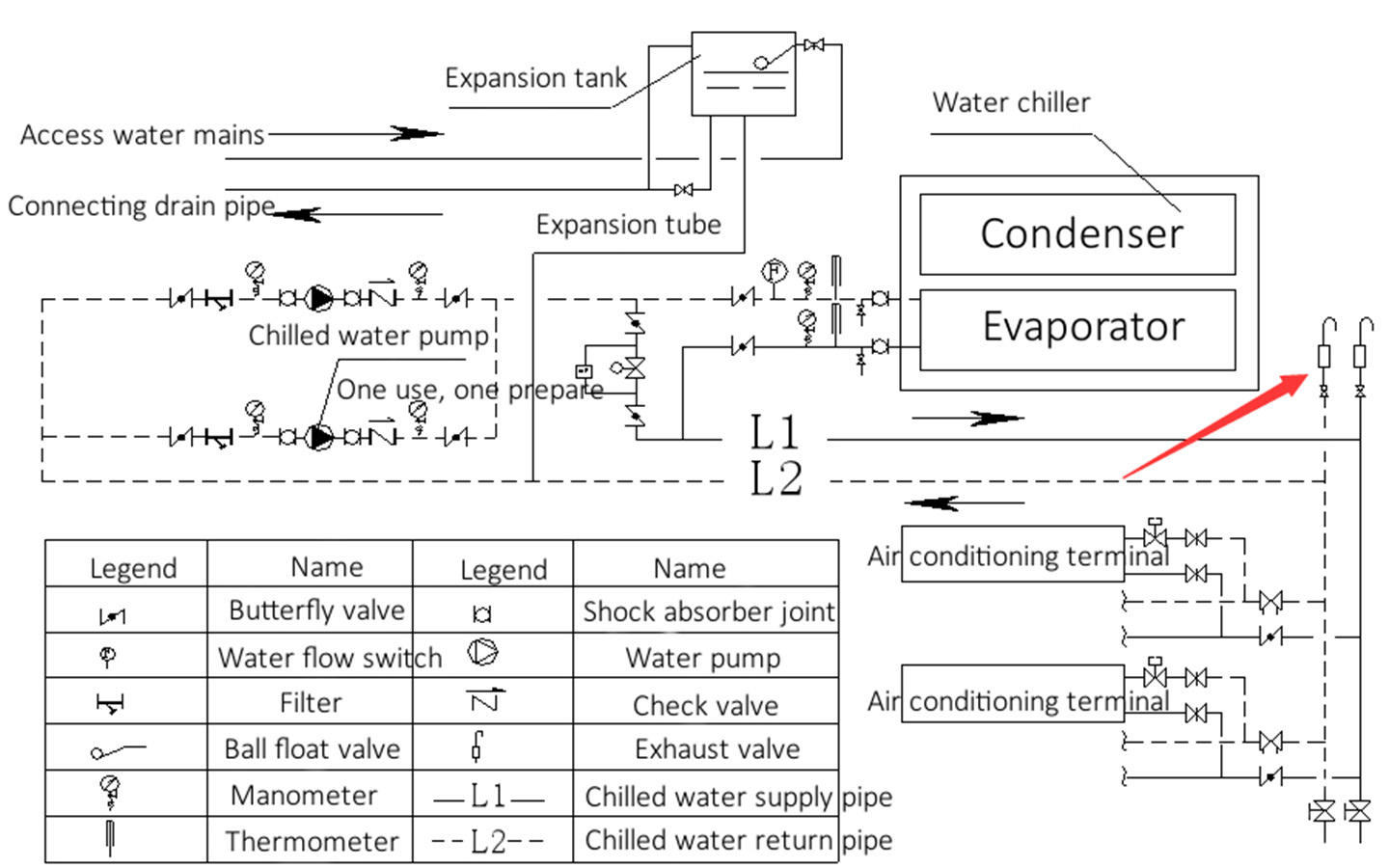
Check Valve: It is primarily used to prevent medium backflow. It is mainly installed on the outlet section of water pumps.
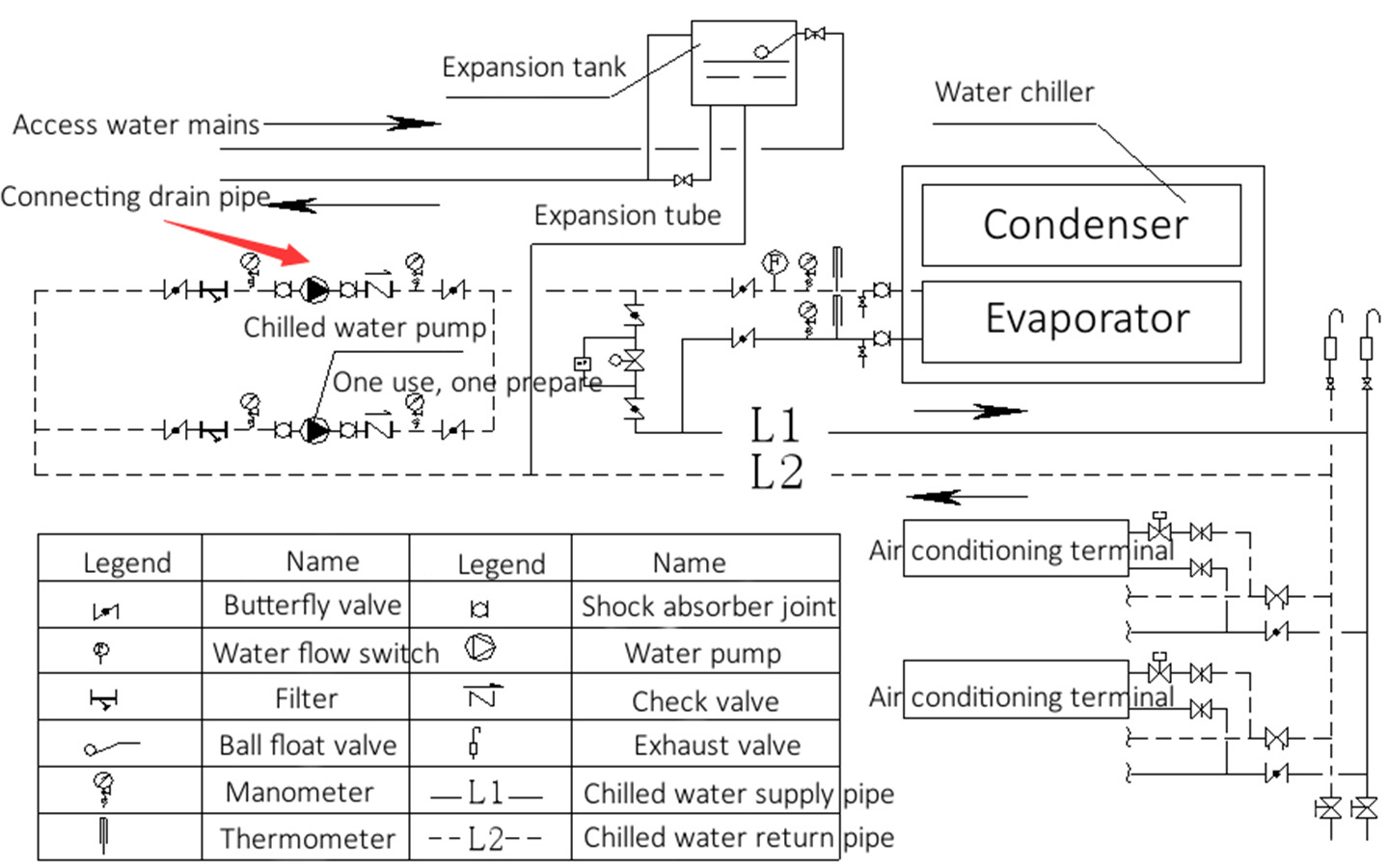
Filter: During the installation of an air conditioning system, there may be some dirt such as sediment in the water pipes. Over time, the water system can also accumulate rust and other contaminants. To prevent contamination of the heat transfer pipes in the air conditioning equipment and avoid blockages in the system, it is necessary to install a water treatment device at the water inlet of important equipment such as chillers.
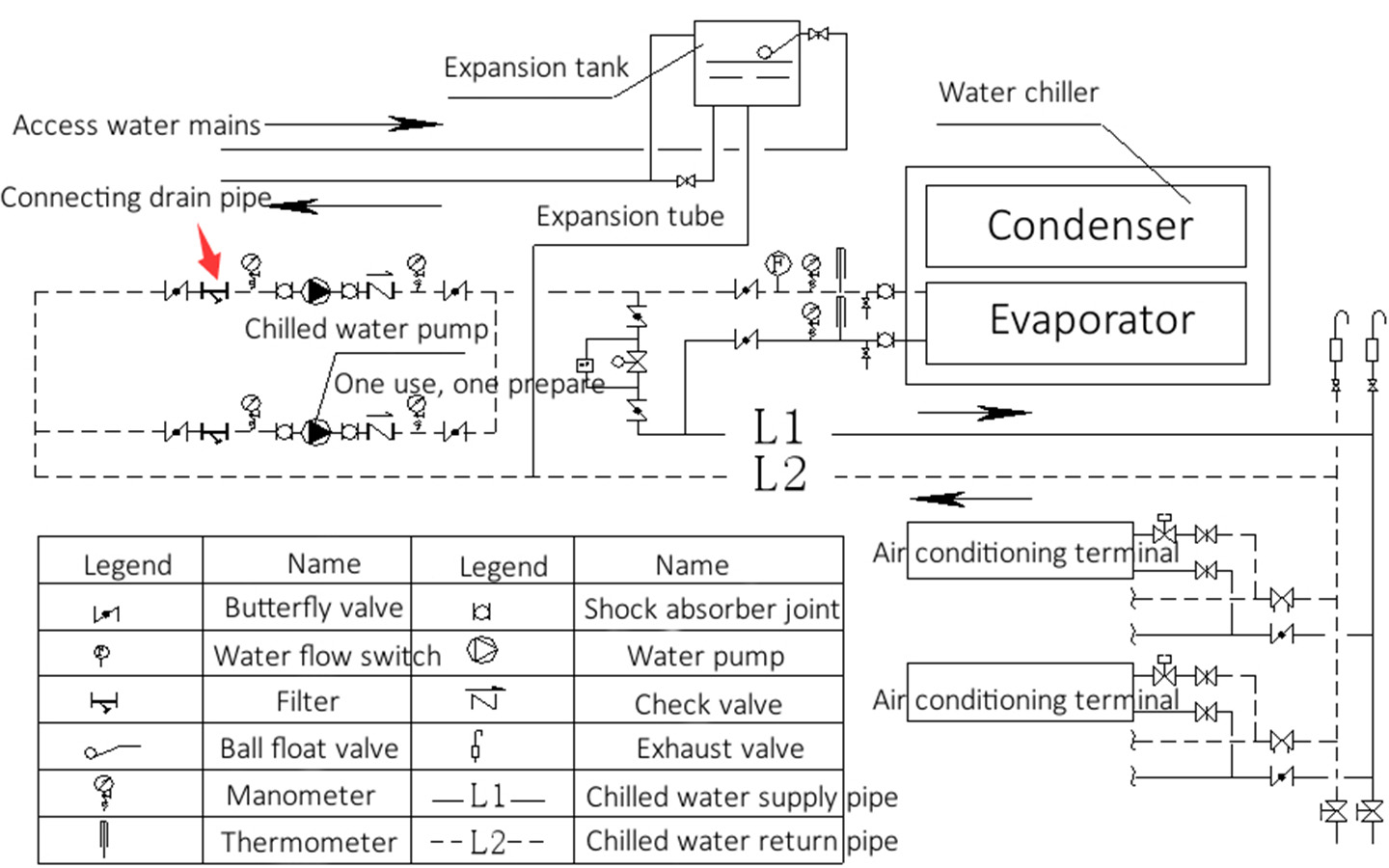
Temperature-controlled electric two-way valve or three-way valve: Based on load control, if the room temperature is below the set value during the summer, the water flow can be regulated or shut off through the operation of the electric valve. Additionally, the electric valve is interlocked with the power supply of the fan coil unit. When the fan coil unit is not in use, the electric valve closes and stops water supply accordingly.
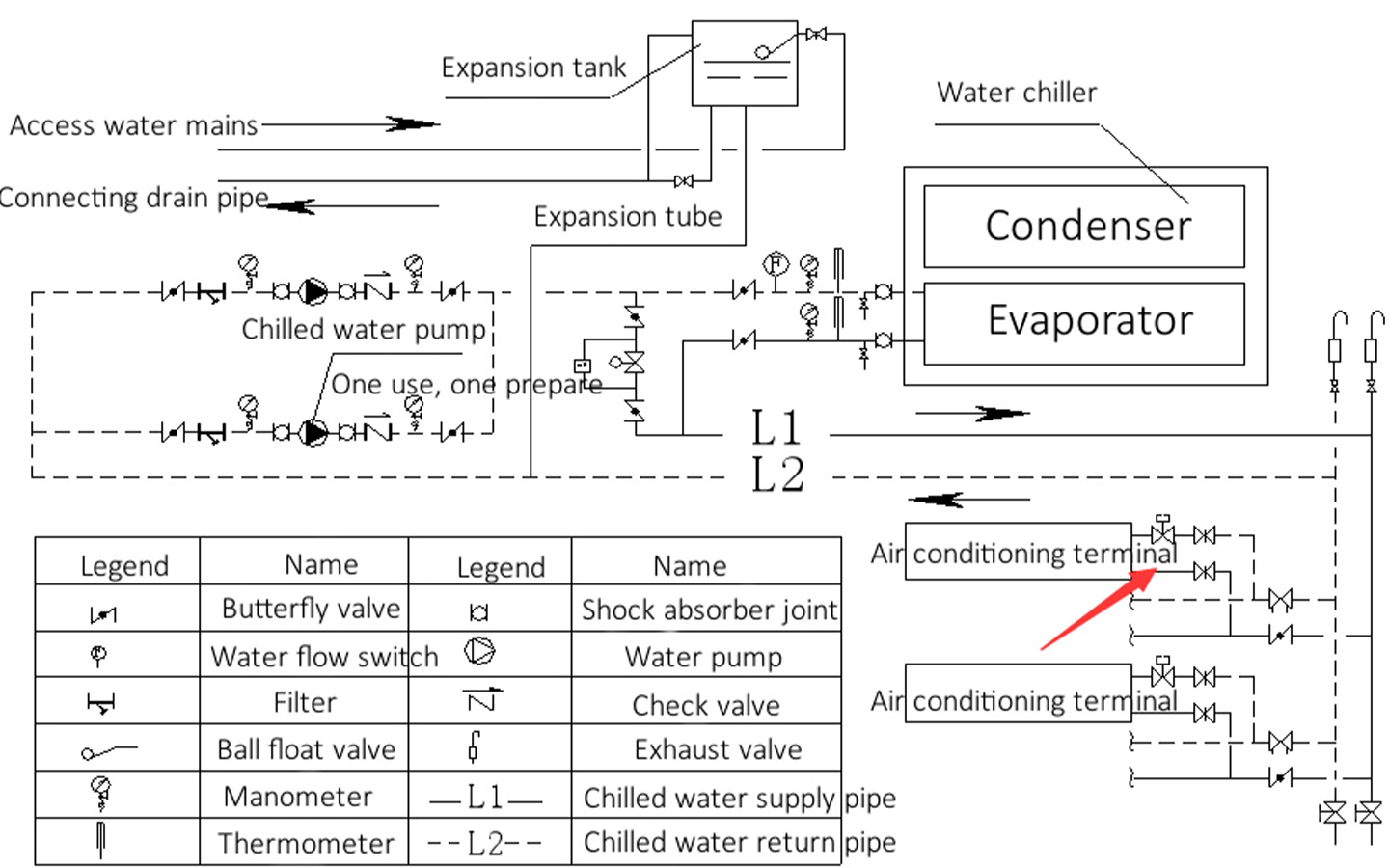
Expansion tank: Firstly, it collects the increased water volume due to thermal expansion to prevent system damage. Additionally, it functions as a pressure stabilizer. The connection point of the expansion tank serves as the fixed-pressure point. Therefore, by connecting the expansion tank at different positions within the system, it can alter the pressure distribution in the water system. This is crucial for analyzing pressure distribution in high-rise building water systems.
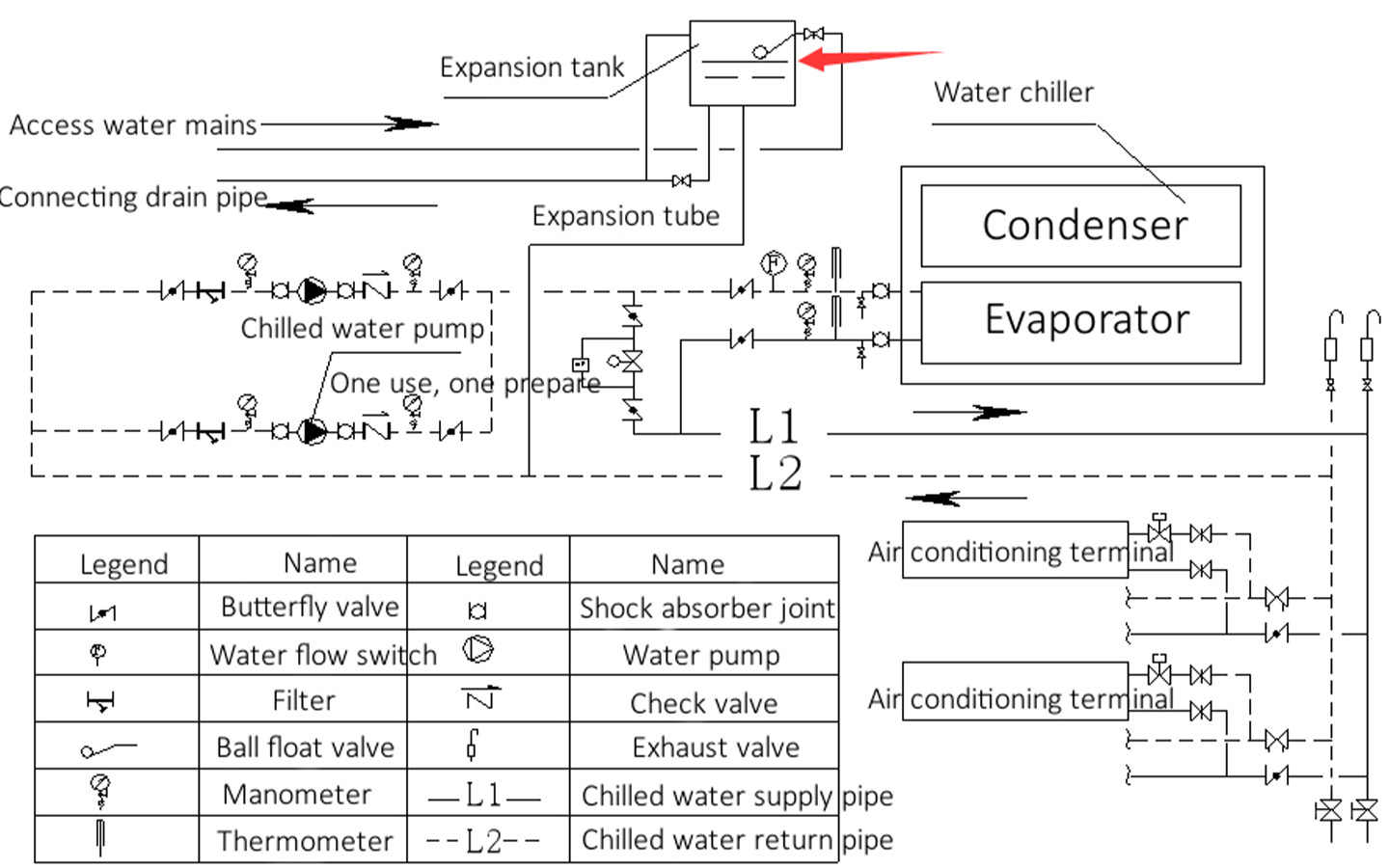
Water system instruments: In order to facilitate the commissioning and operation management of HVAC systems, it is necessary to install certain instruments in the water system. For the main equipment inlet and outlet, pressure measuring devices are typically installed to monitor the pressure distribution within the water system and the resistance of the equipment. Temperature measuring devices, such as at the inlet and outlet of cooling and heating sources, should be installed at locations where water temperature changes occur.
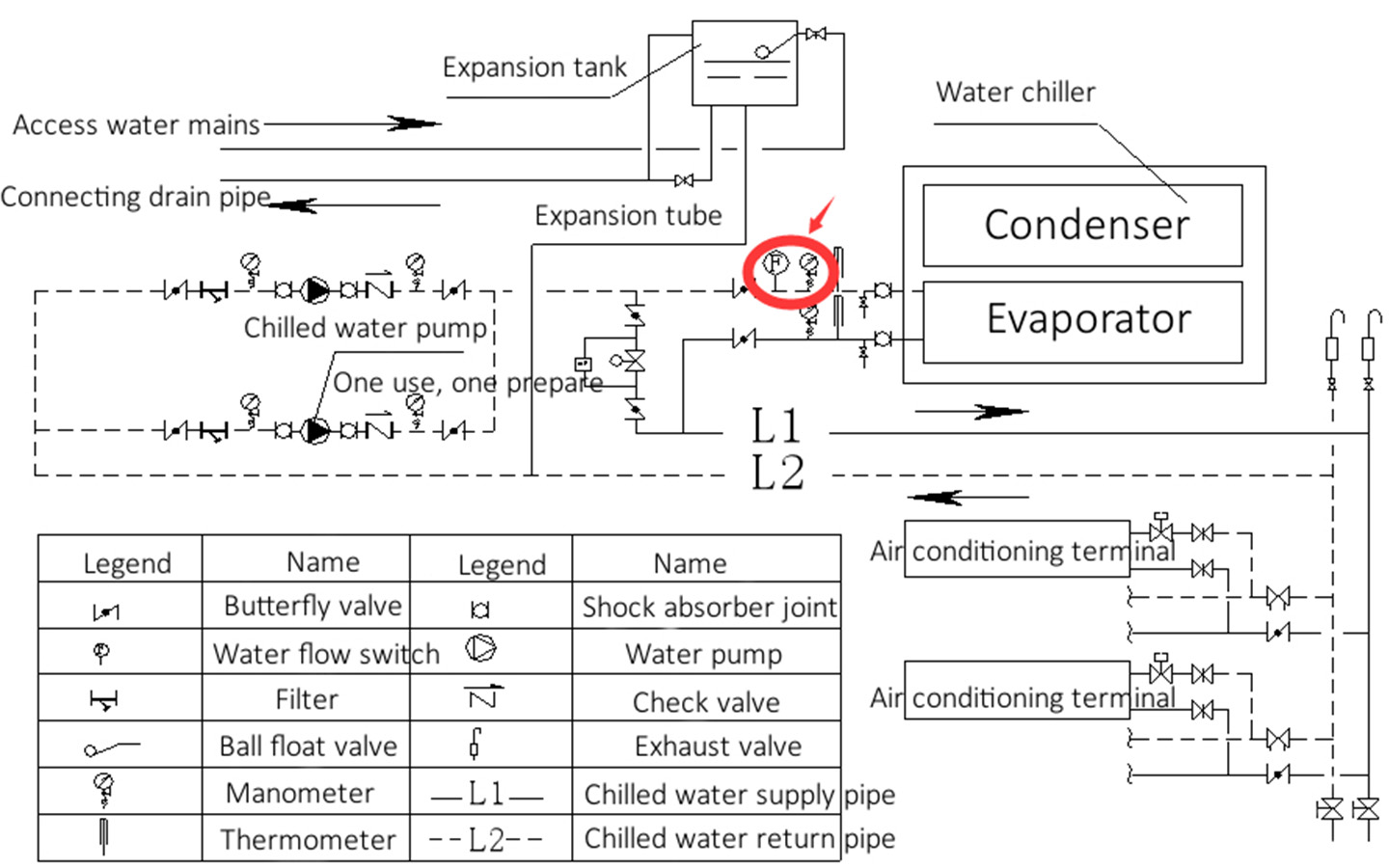
Water system valves: The valves installed in the water system generally serve two purposes: Firstly, they are used for regulation, adjusting the water flow in the piping network. Secondly, they function as shut-off valves. They can be used to switch between cooling and heating sources during seasonal changes or to isolate equipment during maintenance.


 Español
Español Русский
Русский Tiếng Việt
Tiếng Việt 中文
中文 suomi
suomi Français
Français Português
Português English
English Deutsch
Deutsch Français
Français Español
Español Italiano
Italiano Português
Português Pусский
Pусский


